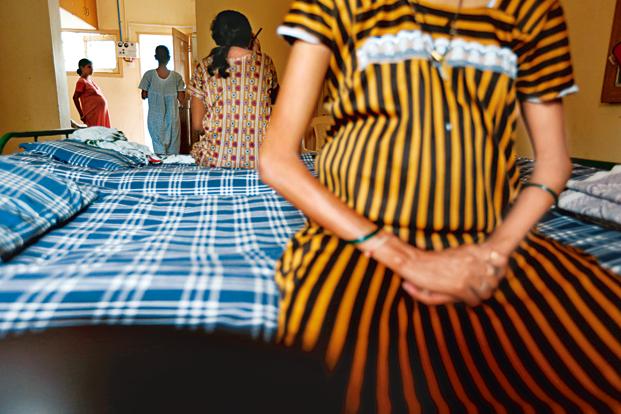
To some, juxtaposing science and sexuality might seem like an unfitting combination.However, as soon as one scratches the surface, the indelible linkage between the two starts to become visible. The global surge in new reproductive technologies provides a powerful instance of this relationship. Many new reproductive technologies (NRTs) are dominantly marketed as a ‘cure’ for ‘infertile’ women. The technology builds on popular narratives of childbirth as an important rite of passage in becoming a woman and as a symbol of elevating her status within the marital household. NRTs are portrayed as pro-women technologies but their relationship to womanhood is much more complicated and layered.
In presenting a ‘cure’ for women, NRTs simultaneously project an image of what it means to be a complete woman, and marginalises those who it deems ‘incomplete’ and ‘insufficient’. The advertisements used to market the technology come with and strengthen the popular imagination of gendered bodies and gender roles. To take a case in point, surrogacy in India has been a booming industry for over a decade now. In 2002, India opened itself to commercial surrogacy which implied that women could now be paid to carry a child for a couple with fertility problems through means of in-vitro fertilisation and transfer of embryos. Most of the women who opt to be a surrogate mother hail from an underprivileged background. A lack of resources and lax regulatory laws allow private fertility clinics to easily recruit women who lack any other source of employment. Easy availability of surrogates and the lower cost at which they can be hired has made India a global favourite[1] for national as well as international couples seeking surrogacy.
A combination of a lack of female health awareness, profit-seeking private enterprises, and the dominant patriarchal ideology dovetail in the practice of assisted reproduction. A survey conducted by the Centre for Social Research in 2013 revealed that 68% of surrogate mothers in Delhi and 78% in Mumbai were housemaids by profession. Recently, with the Assisted Reproductive Technology bill (ART bill) the government wants to restrict surrogacy to couples of Indian nationality only. The idea behind the bill is to foster ‘altruistic surrogacy’ in place of ‘commercial surrogacy’. The bill grants certain protective rights to surrogate mothers but masks the cleavage between the surrogate and the recipient mother by calling it a gift, an act of altruism. The advertisements used to market NRTs resurrect this imagery of sisterhood between the surrogate and the recipient. In doing so, NRTs propagate existing gender roles and social arrangements. NRT in India operates within the backdrop of the image of the heterosexual family which is the only suitable candidate for procuring a child in its practice.
The ART bill excludes single men and women, LGBT people, or couples in live-in relationships from opting for surrogacy to have a child.Other options available to people seeking to have a child, such as adoption, are constantly downplayed with the growing emphasis on assisted reproduction. NRTs, in putting motherhood as the ultimate virtue of being a woman, trying to portray the exchange of the child between the surrogate and the recipient as an act of the surrogate bestowing a gift to the recipient woman who now can be called complete. But it never reveals the conditions of exploitation within which this exchange happens. The social circumstances that influence the decision of poor women to opt for surrogacy are crucial to look at. There is a need for better regulation of surrogacy considering the present scenario where exploitation and poor health are rampant among women. Furthermore, in bracketing womanhood within the terms of procreation, other, alternate ways of being a woman are subjugated.
The case of NRTs presents the entanglement between science and social representation of gender. It borrows from the ideal of motherhood in a patriarchal context like India which deems this the appropriate vocation for a woman. But the two people involved in the transaction of surrogacy occupy different positions of power. The surrogate who bears the child is not a woman with similar economic and social standing as the one who receives the child. Behind the narrative of motherhood lies a reality of acute commercialisation of the surrogate’s human rights. She is hardly portrayed in her reality in the advertisements glorifying the ‘scientific miracle’ that NRTs depict. It is important to continually probe these questions as the popularity of NRTs is increasing at an exponential rate.

What I seek to highlight is that a scientific technology is not only about enhancing human capacity; it borrows from social understanding of what it means to be ‘able’, ‘disabled’, ‘complete’ or ‘incomplete’ in any way. This is not to suggest that technologies do not aid people, but to bring out the complex relationship between science and society that often gets camouflaged when one talks of science.I do not intend to repudiate the desire among people to have a child but the identity of a woman should not be tethered to her capacity to bear one, and needless to say, the right to desire should be extended to everyone, be it LGBT people or single parents.
—
[1]DasGupta, S., & Dasgupta, S. D. (n.d.). Globalization and Transnational Surrogacy in India: Outsourcing Life. 2014.
Cover image credit: Reuters